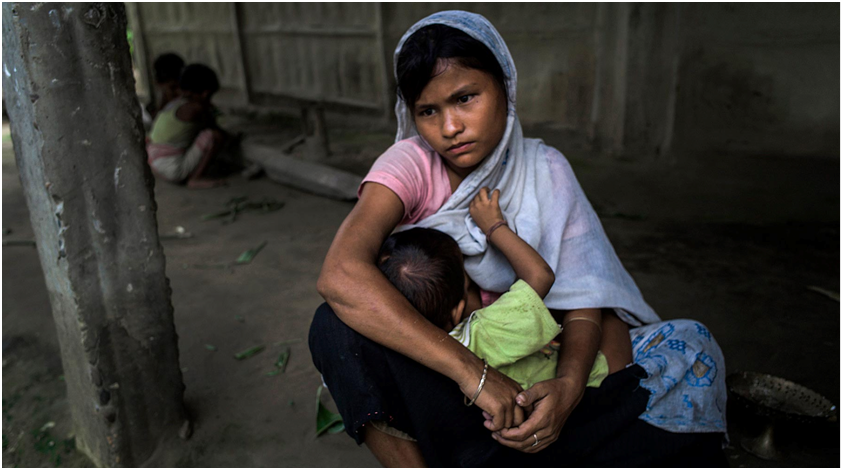Today in most developing countries, there is a conscious effort towards curbing child marriage. As world leaders seek workable methods to bring this practice to an end, women in government and top executive positions have a role to play in ensuring that children are safe and have a secure future.
Choosing who to marry and when to marry are parts of the fundamental rights in the life of any human being. Considering the importance of this activity(marriage), it must of necessity be done with full consciousness ̶ with the individual fully aware of the import of such a decision. A few days ago, news making the rounds was the completion of the drafting of the bill that will put an end to child marriage in the country of Zimbabwe. Not only is it heartwarming that the outlawing of this age-long practice that has held so many countries spellbound is near extinct, but of noteworthiness is the prospective reflection of this bill on the cultural development of Africa – this keeps Africa in tandem with the world’s revered countries.
According to the Human Rights Watch, investigations in Afghanistan, Bangladesh, Malawi, Nepal, South Sudan, Tanzania, Yemen, and Zimbabwe – countries with high incidences of child marriage, show that early marriage has a catalogue of consequences, which are activated in a chain-like sequence – from totally terminating the girl’s ability to access several benefits, to leaving school early, undergoing the demands of pregnancy and precocious motherhood. The hazards totally underwhelm the ‘benefits’. Other impacts include marital abuses, from the minor to major ones, an increased risk of domestic violence, a reduced chance of a normal source of livelihood, the risk of HIV transmission, and most importantly, the irreparable emotional damage done to the child – as seen in a lot of these brides.
In a 2015 UNICEF report titled State of the World’s Children, the countries with the highest rates of child marriage before age 18 were:Niger* — 76 percent, Central African Republic — 68 percent, Chad* — 68 percent, Bangladesh* — 65 percent, Mali* — 55 percent, Guinea — 52 percent, South Sudan* — 52 percent, Burkina Faso — 52 percent, Malawi* — 50 percent, Mozambique — 48 percent. The report goes that “Of the 25 countries with the highest rates of child marriage, the majority are affected by conflict, fragility, or natural disasters.” It places Africa at the centre of the fight against this act that belies rights’ suppression.
Save The Children ( a not-for-profit, which focuses on the pertinence of eradicating child marriage)in collaboration with other international rights from West and Central Africa, religious and traditional leaders and civil society groups committed to a three-day summit. The group received an elevated commitment from Burkina Faso’s first lady, Sika Bella Kabore, who has pledged that her nation would end child marriage by 2025.
Statistically, the number of illegal child marriages has increased worldwide since 2015, from 11.3 million to 11.5 million. The numbers seem not to be reflective of the effort put into the campaign, but considering the countries culpable in this, and how it is highly regarded as a handed-down culture, more intensifying efforts have to be put into this worthy cause. In the same vein, 82.8 million girls aged 10 to 17 still have no protection against child marriage. The number of girls exempt from clauses which allow parents and judges to consent to marriages, increased to 96.1 million.
With the global outcry for an increase in the quality of the girl-child education, other countries and societies where this practice is upheld must of necessity, reappraise the role of the girl child in the family, and consequently review this law.
Yousafzai Malala, the 20-year-old Pakistani and youngest Nobel Laureate has been at the fore of the campaign for the girl child education – an antithesis of child marriage. On October 9, 2017, she announced to the world (on Twitter) her enrollment for a college degree. Malala has been travelling around the globe, campaigning for the rights of the girl child – a cardinal mandate of her organization – to campaign for an access to quality education for the girl child.
Today, no nation can afford to shortchange the girl child by limiting her to an early family life and an unprepared motherhood -without necessary provisions for a quality life i.e one that grants her good economic, education, self-empowering opportunities, and most importantly, the power to DETERMINE HER CHOICES. Any country that holds tight to this self-destructive practice would experience a dearth of human resources, human capital development, competitiveness, productivity, and economic development. Schemes that discourage gender-based participation in socio-economic activities must be sustained.Because in them, are ladened the silver bullet to eradicate poverty and other ravages of humanity and our collective humanness. Above all, it is time women in key positions take a stand on this matter and devise ways of appealing to the consciences of parents, traditional rulers, and stakeholders in gender-related fields. This will go a long way in changing the tide and securing the future of the girl-child.




